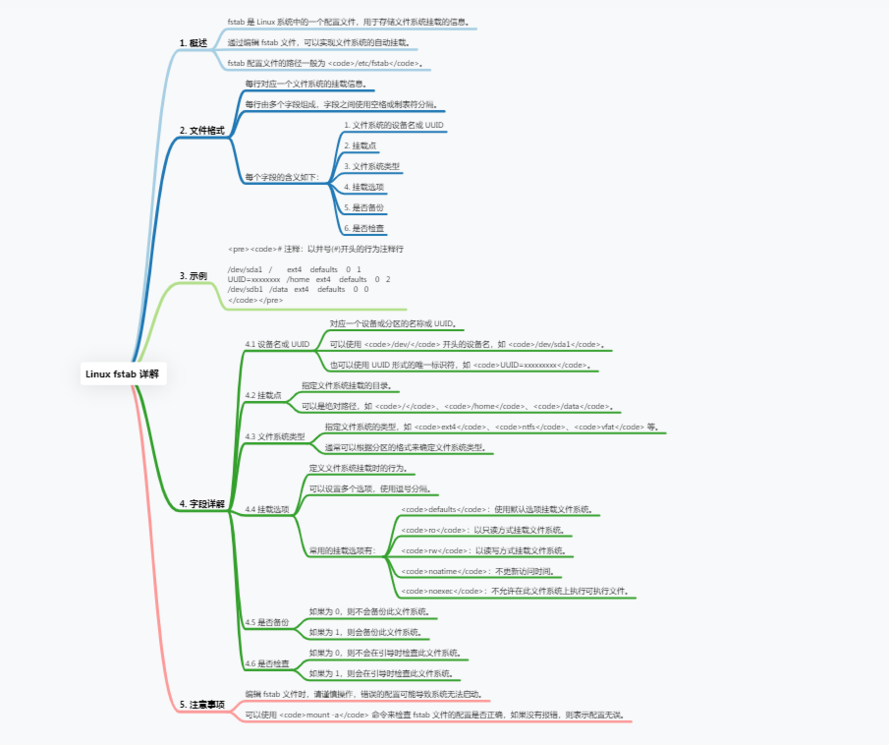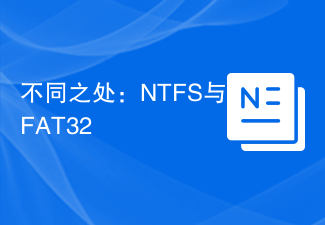File processing function
1. File operation.
Open file:
When the specified file is opened, the corresponding object will be returned. If the specified file does not exist, it may be automatically created. this file.
Resource fopen(string filename, string mode [,int use_include_path][,resource context]);
filename can be a file name containing a file path, or it can be a URL given by a certain protocol (open a remote file ). In order to avoid the trouble caused by system switching, '/' is used as the path separator.
Mode: Set the way to open the file, respectively:
r: Read-only mode, the file pointer is located at the head of the file.
r: Read-only mode - read/write mode, the file pointer is located at the head of the file. Note that overwriting may occur.
w: Write-only mode, the file pointer is located at the head of the file. If the file exists, delete it The content is rewritten; otherwise, the file is created by itself.
w: Write-only mode - read and write the file, the read/write file pointer points to the head of the file. If the file exists, the content is deleted and rewritten; otherwise, the file is created by itself
Write mode opens the file. If the file exists, return false and generate an E_WARNING level error message
a: Append, the file pointer points to the end of the file. If the file exists, append directly to the end of the file; otherwise, create the file by yourself.
a: Append, the file pointer points to the end of the file. If the file exists, append or read directly at the end of the file; otherwise, create the file yourself.
b: Binary mode. Used to link with other modes. ( (option under windows)
t: used to combine with other modes. (option under windows)
Please use the fopen() function with caution, because the file may be deleted accidentally. At the same time, different The operating systems have different line ending habits (UNIX:\n Windows:\r\n Macinitosh:\r). If you use the line terminator incorrectly, a bunch of garbled characters may be output when the file is opened. The above can be solved by " 't'","'b'" to avoid.
Read file:
String fgetc(resource handle);//Return a character in the file pointed to by handle. If EOF is encountered, return false;
String fgets(int handle[,int length]);//Get a line of characters from the location pointed to by the file pointer, and return a string of up to length-1 bytes. .The file pointer must be valid and point to a file successfully opened by fopen() or fsockopen(). length indicates the length of the data read. It ends when a newline, EOF, or specified length is encountered. Ignoring length will read lines End.
String fgetss(resource handle[,int length][,string allowable_tags]);//Read a line and filter out html and php tags.
String fread(int handle,int length);/ /Read data of any length from a file., can also be used to read binary files. handle is a resource pointing to the file, length reads length bytes or stops execution when EOF is encountered.
Example:
$filename="./files.text";
$fp=fopen($finename,"rb");
$encho fread($fp,100);
?>
div>
readfile(), file() and file_get_contents() functions.
readfile(), file() and file_get_contents() functions.
int readfile(string filename[,bool use_include_path,resource context]); //Read a file and write it to the buffer. If successful, return the number of bytes read, otherwise return false. filename file name. The parameter use_include_path controls whether to support searching for files in include_path, and true means it is supported. There is no need to open/close the file using the readfile function.
Array file(string filename [,bool use_include_path[,resource context]]);//Read the contents of the entire file into the array. If successful, an array is returned. Each element in the array is a corresponding line in the file, including newlines; otherwise, false is returned;
string file_get_contents(string filename[,bool use_include_path[,resource context[,int offset[,int maxlen]]]]);//context is new content in 5.0 and can be ignored with NULL. offset, maxlen is the content of 5.1. offset is used to mark the starting position of the file, and maxlen sets the length of the file read. This method is suitable for reading binary files. Is the preferred method for reading the contents of a file into a string. If supported by the operating system, memory mapping technology is also used to enhance performance. If you open a URL with special characters (such as spaces), use urlencode() to encode the URL.
Remarks: readfile(), file() and file_get_contents() do not need to use the fopen() and fclose() functions when reading the contents of the entire folder, but when reading one character, one line characters and any length of characters.
2. Write to the file:
int fwrite(resource handle,string[,int length]);//Perform the file writing operation, it also has an alias fputs(). This method is used to write the contents of string to the file pointer handle. If length is set, the operation stops after length bytes have been written or the string has been written. Returns true if the write is successful, otherwise returns false.
Note: If the length parameter is given, the magic_quotes_runtime option in the php.ini file will be ignored, and the slashes in the string will not be removed. To distinguish between binary files and text file systems, 'b' must be added to the mode parameter of the fopen() function when opening the file.
int file_put_contents(string filename,string data[.int flags[,resource context]]);//Write a string into the file. If successful, return the number of bytes, otherwise return false. flags: implement locking of files (options include file_use_include_path, file_append: append, lock_ex: exclusive lock). context a context resource.
Note: Although fwrite() has the function of writing files, it must be supported by the fopen() and fclose() functions. file_put_contents() integrates the functions of fopen(), fwrite(), and fclose(), and can complete file writing independently.
3. Close the file
If the file is open, it should have a close function. After the operation on the file is completed, the file should be closed, otherwise it may cause errors.
bool fclose(resouce handle);//Close the file pointed to by parameter handle. If successful, return true, otherwise return false.
Lock file
When writing data to a text file, you need to lock the file first to prevent other users from modifying the content of the file at the same time. File locking is implemented in PHP through flock() function.
bool flock(int handle,int operation);//The operation parameter controls the locking permission. Including: lock_sh: obtain shared lock (reader). lock_ex: Obtain exclusive lock (write). lock_un: Release the lock. lock_nb: Prevent flock() function from blocking when locking.
Directory processing function
A directory is a special kind of file. Since it is a file, if you want to operate it, you must open it first, then you can browse it, and finally remember to close it.
1. Open the directory
Open the specified directory file. If successful, return the directory handle. Otherwise return false. Unlike opening a file, if the directory does not exist, it will not automatically create the directory, but will throw an error message. By adding the "@" symbol before the opendir() function, you can block the output of error messages.
Resource opendir(string path[,resource context]);//path specifies the directory file to be opened. If the path specified is not a valid directory, or the file system error cannot be opened due to permission issues, then this function will return false and generate an E_WARNING level error message.
2. Browse the directory
Use the handle returned by the opendir function in conjunction with the scandir function to implement the browsing operation.
Array scandir(string directory[,int sorting_ordering[,resource context]]);//Used to browse directories and files under the specified path. Returns an array containing the file names if successful, otherwise returns false. directory specifies the directory to be browsed. If it is not a directory, false will be returned and an E_WARNING level error message will be generated. sorting_order sets the sorting order, the default is alphabetical ascending order. If this parameter is provided, it will be sorted in descending order.
Remarks: The is_dir() function determines whether the specified file name is a directory. Returns true if the filename exists and is a directory, false otherwise. If it is a relative directory, its relative path is checked against the current working directory.
3. Close the directory.
void closedir(resource handle);//handle, the handle of the working directory to be closed.
Note: As we have learned before, if the opened directory does not exist, the system will not create the directory for us. Then we can create the desired directory ourselves. The following functions can be applied:
mkdir() function: Create a new directory and return true if successful, otherwise false.
rmdir() function: delete a directory. The directory must be empty (no files or subdirectories in the directory) and must have operating permissions.
Unlink() function: deletes files, returns true if successful, false if failed.
Principles of file upload and download
Step content:
Step 1: Control the uploaded file and configure it through the php.ini file.
Step 2: Judge the uploaded file.Upload file size, format, etc.
Step 3: Perform the operation method of uploading files.
1. Control uploaded files:
PHP controls uploaded files through php.ini, including: whether to support uploading, the temporary directory of uploaded files, upload The size of the file, the instruction execution time, and the memory space allocated by the instruction.
Locate the file uploads option in the php.ini file and complete the settings for the above options. The meaning of the options is as follows:
File_uploads: If it is on, it means that the server supports file upload. If it is off, it does not support it. Generally, it is supported by default, and this option does not need to be modified.
Upload_tem_dir: The temporary directory for uploading files. Before the file upload is successful, the file is first saved in the server's temporary directory. Most use the system default directory, but you can also set it yourself.
Upload_max_filesize: The maximum size of files allowed to be uploaded by the server, in MB. The system default is 2MB. If it exceeds, the value must be modified.
max_execution_time: The maximum time that a command in php can be executed, in seconds. This command must be modified when uploading very large files, otherwise the timely upload of files will be within the range allowed by the server, but if it exceeds the maximum time that the command can be executed, uploading will still not be possible.
Memory_limit: The memory space allocated by a command in php, in MB. Its size also affects the uploading of very large files.
Remarks: When controlling the application of uploaded files in the client, the enctype and method attributes in the form form, as well as the hidden field MAX_FILE_SIZE.
Enctype="multipart/form-data": Specify the form encoding data method .
Method="post": Specify the method of data transmission.
: Control the size of the uploaded file through the hidden field, in bytes. This value cannot exceed the value set by the upload_max_filesize option in the php.ini configuration file. It cannot fully control the size of uploaded files, it can only avoid some unnecessary troubles.
2. Judge uploaded files
The global variable $_FILES is used to judge uploaded files. $_FILES is an array that contains information about all uploaded files. . The meaning of each element in the array is as follows:
$_FILES[filename][name]: stores the file name of the uploaded file, such as text.txt, title.jpg, etc.
$_FILES[filename][size]: The size of the stored file, in bytes.
$_FILES[filename][tem_name]: The file name used to store the file in the temporary directory, because when the file is uploaded, it must first be stored in the temporary directory as a temporary file.
$_FILES[filename][type]: MIME type that stores uploaded files. MIME specifies the types of various file formats. Each MIME type is composed of a main type and a subtype separated by "/". For example: the main type of "image/gif" is image, and the subtype is GIF format file. "text/html" represents an HTML file of text.
$_FILES[filename][error]: Stores the error code of file upload: This item is a new content in PHP4.2.0 version. There are 5 types of return values:
0: Indicates no error. File uploaded successfully.
1: Indicates that the size of the uploaded file exceeds the limit value of the upload_max_filesize option of the configuration file directive.
2: Indicates that the size of the uploaded file exceeds the value specified by the max_file_size option in the HTML form.
3: Indicates that only part of the file has been uploaded.
4: Indicates that no files have been uploaded.
Example:
/*Determine whether to upload the picture*/
if(!empty($_FILES['up_picture'][name])){
/*Assign the picture information to the variable*/
$type=strtolower (strstr($_FILES['up_picture'][name],"."));
if($type != '.jpg' && $type != '.gif') echo "The file format you uploaded Wrong";
else{
if($_FILES['up_picture'][size]0){
echo "Upload file name:" .$_FILES['up_picture'][name]."
";
echo "Upload file type:".$type."
";
echo "Upload file size:" .$_FILES['up_picture'][size]."
";
}else echo "The picture size does not meet the requirements.";
}
}
?>
3. File upload.
Use the move_uploaded_file() function in PHP to upload files. But before execution, in order to prevent potential attacks from illegally managing files that cannot be interacted with through scripts, you can first use the is_uploaded_file() function to determine whether the specified file was uploaded through HTTP POST, and if so, return true. This function ensures that malicious users cannot trick scripts into accessing inaccessible files.
bool is_uploaded_file(string name);//Used to determine whether the specified file was uploaded through HTTP POST. filename must be a variable similar to $_FILES['filename']['temp_name']. The file name uploaded from the client cannot be used. $_FILES['filename']['name'].
move_upload_file(string filename,string destination);//This function is used to upload files to the specified location in the server. Returns true if successful, false otherwise. filename specifies the temporary file name of the uploaded file, that is, $_FILES['tmp_name'], and the parameter destination specifies the new path and name of the file saved after uploading. If the parameter is not a legal uploaded file, no operation will occur and the function will return false. If it is a legal upload operation but cannot be moved for some reason, no operation will occur and a warning will be issued while returning false.
if( !empty($_FILES[ 'up_picture' ][ 'name' ])){
if( $_FILES['up_picture']['error'] > 0){
echo "上传错误!";
switch($_FILES['up_picture']['error']){
case 1:
echo "上传文件超出配置文件规定值";
break;
case 2:
echo "上传文件超出表单规定值";
break;
case 3:
echo "上传文件不全";
break;
case 4:
echo "没有上传文件";
break;
}
}else{
if( ! is_dir('./upfile/') ) mkdir('./upfile/');
$path='./upfile/'.time().$_FILES['up_picture' ][ 'name' ];
if( is_uploaded_filed( $_FILES['up_picture' ][ 'tmp_name' ] )){
if(!move_uploaded_file( $_FILES['up_picture' ][ 'tmp_name' ] ,$path )){
echo "上传失败!";
}else{
echo "文件".time().$_FILES['up_picture' ][ 'name' ] ."上传成功,大小为:".$_FILES['up_picture' ][ 'size' ] ;
}
}else{
echo "上传文件".$_FILES['up_picture' ][ 'name' ]."不合法";
}
}
}
?>
4.文件下载
这裡介绍通过http方式下载文件,主要用到header()函数。header()函数属于HTTP函数,其作用是以HTTP将HTML文档的表头送到浏览器,并告诉浏览器具体怎麽处理这个页面。
void header(string string[,bool replace[,int http_respone_code]]);//参数string 指定发送的标头。参数replace控制如果一次发送多个标头,对于相似的标头是替换还是添加。如果是false,则强制发送多个同类型的标头,默认为true。参数http_respone_code强制将HTTP响应代码设置为指定值:
下载步骤如下:
a):通过"Content-Type" 指定文件的MIME类型。
b):通过"Content-Disposition" 对文件进行描述,值"attachment;filename="test.jpg"" 说明是一个福建,同时指定下载文件的名称。
c):通过"Content-Length" 设置下载文件的大小。
d):通过readfile()函数读取文件内容。
例如:
header('Content-Type:image/jpg');
header(' Content-Disposition:attachment;filename="test.jpg" ');
header('Content-Length:'.filesize('test.jpg') );
readfile('test.jpg');
5.访问远程文件
步骤1:配置 php.ini 文件选项 allow_url_fopen设置为on。参数默认是开啓的,允许打开http和ftp指定的远程文件。如果 allow_url_fopen设置为off,则不允许打开远程文件。
步骤2:使用fopen()函数读取文件内容。根据内容创建你想要的资源,保存到本地。
ps:更多php.ini配置文件中的文件操作 和 目录操作的扩展方法请参考官方php指南。
 如何应对Linux系统中的文件系统崩溃问题Jun 29, 2023 pm 04:05 PM
如何应对Linux系统中的文件系统崩溃问题Jun 29, 2023 pm 04:05 PM如何应对Linux系统中的文件系统崩溃问题引言:随着计算机技术的不断发展,操作系统的稳定性和可靠性也变得越来越重要。然而,尽管Linux系统被广泛认为是一个稳定和可靠的操作系统,但仍然存在文件系统崩溃的可能性。文件系统崩溃可能会导致数据丢失和系统异常等严重后果。因此,本文将介绍如何应对Linux系统中的文件系统崩溃问题,以帮助用户更好地保护自己的数据和系统。
 fstab(File System Table)Feb 19, 2024 pm 06:30 PM
fstab(File System Table)Feb 19, 2024 pm 06:30 PMfstab(FileSystemTable)是Linux系统中的一个配置文件,用于定义系统启动时挂载文件系统的规则。fstab文件位于/etc目录下,可通过手动创建或编辑器修改。每行规定一个要挂载的文件系统。每一行有六个字段,它们的意义如下:文件系统设备文件或UUID可用于指定要挂载的文件系统的设备,UUID是一个独特的标识符,可通过blkid命令获取设备的UUID。2.挂载点:指定文件系统要挂载到的目录,可以是绝对路径(例如/mnt/data)或者相对路径(例如../data)。3.文件系统类
 不同之处:NTFS与FAT32Feb 18, 2024 pm 10:18 PM
不同之处:NTFS与FAT32Feb 18, 2024 pm 10:18 PMNTFS和FAT32是两种常见的文件系统,用于组织和管理计算机硬盘上的数据。虽然它们都具有一些共同的功能和特点,但在许多方面也有一些重要的区别。本文将探讨NTFS和FAT32之间的几个主要区别。功能和性能:NTFS(NewTechnologyFileSystem)是微软Windows操作系统中较新的文件系统,它具备许多先进的功能,如数据压缩、文件加密、
 深入了解Linux的标准文件系统(Ext2/Ext3/Ext4)Dec 31, 2023 pm 10:18 PM
深入了解Linux的标准文件系统(Ext2/Ext3/Ext4)Dec 31, 2023 pm 10:18 PMExt全称Linuxextendedfilesystem,extfs,即Linux扩展文件系统,Ext2就代表第二代文件扩展系统,Ext3/Ext4以此类推,它们都是Ext2的升级版,只不过增加了日志功能,且彼此向下兼容,所以Ext2被称为索引式文件系统,而Ext3/Ext4被称为日志式文件系统。备注:Linux支持很多文件系统,包括网络文件系统(NFS)、Windows的Fat文件系统。查看Linux支持的文件系统:ls-l/lib/modules/$(uname-r)/kernel/fs查看
 Go语言中如何处理并发文件的文件系统文件锁和进程间文件共享问题?Oct 09, 2023 pm 05:53 PM
Go语言中如何处理并发文件的文件系统文件锁和进程间文件共享问题?Oct 09, 2023 pm 05:53 PMGo语言中处理并发文件的文件系统文件锁和进程间文件共享问题引言:在Go语言中,我们常常需要处理并发访问文件的情况,包括文件系统文件锁和进程间文件共享。本文将介绍如何使用Go语言处理这些问题,并提供具体的代码示例。一、文件系统文件锁在多个并发程序同时访问同一个文件时,为了避免出现竞争条件和数据不一致的问题,我们可以使用文件系统文件锁来进行同步。Go语言提供了s
 Linux系统命令大全。Feb 19, 2024 pm 10:54 PM
Linux系统命令大全。Feb 19, 2024 pm 10:54 PM以下是常见的Linux系统命令大全(按字母顺序排列):alias:设置命令别名awk:文本处理工具,用于提取和操作文本数据cat:连接文件并打印到标准输出cd:改变当前工作目录chmod:修改文件或目录的权限chown:修改文件或目录的所有者和所属组chroot:改变根文件系统目录cp:复制文件或目录cron:定时任务管理工具curl:用于下载或上传文件的命令行工具cut:按列提取文本数据date:显示或设置系统日期和时间dd:复制和转换文件df:显示文件系统的磁盘使用情况diff:比较文件或目
 Go语言中如何处理并发文件的文件系统文件切割和文件合并问题?Oct 08, 2023 am 11:13 AM
Go语言中如何处理并发文件的文件系统文件切割和文件合并问题?Oct 08, 2023 am 11:13 AMGo语言中如何处理并发文件的文件系统文件切割和文件合并问题?在处理大文件时,我们常常需要将文件切割成小块进行处理,并在处理完成后将小块文件合并成一个完整的文件。在并发处理大文件时,我们希望能够充分利用多个处理器核心来提高处理速度。Go语言提供了丰富的并发处理机制和文件操作函数,可以很方便地实现文件系统文件切割和文件合并。首先,我们需要确定文件切割的大小。可以
 CentOS文件系统常见问题解答Feb 23, 2024 pm 12:45 PM
CentOS文件系统常见问题解答Feb 23, 2024 pm 12:45 PMCentOS文件系统常见问题解答在使用CentOS操作系统过程中,文件系统是一个至关重要的组成部分。它负责存储、组织和管理文件和目录,对系统的稳定运行和数据安全起着至关重要的作用。然而,不可避免地,在使用文件系统的过程中会遇到一些常见问题。本文将针对CentOS文件系统常见问题进行解答,希望能帮助读者更好地理解和处理这些问题。问题一:如何查看文件系统的使用情


Hot AI Tools

Undresser.AI Undress
AI-powered app for creating realistic nude photos

AI Clothes Remover
Online AI tool for removing clothes from photos.

Undress AI Tool
Undress images for free

Clothoff.io
AI clothes remover

AI Hentai Generator
Generate AI Hentai for free.

Hot Article

Hot Tools

Dreamweaver CS6
Visual web development tools

Zend Studio 13.0.1
Powerful PHP integrated development environment

EditPlus Chinese cracked version
Small size, syntax highlighting, does not support code prompt function

SublimeText3 English version
Recommended: Win version, supports code prompts!

ZendStudio 13.5.1 Mac
Powerful PHP integrated development environment






